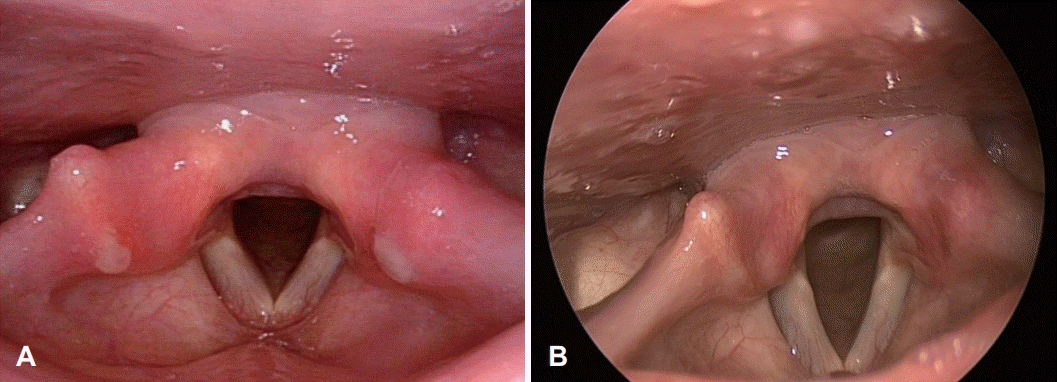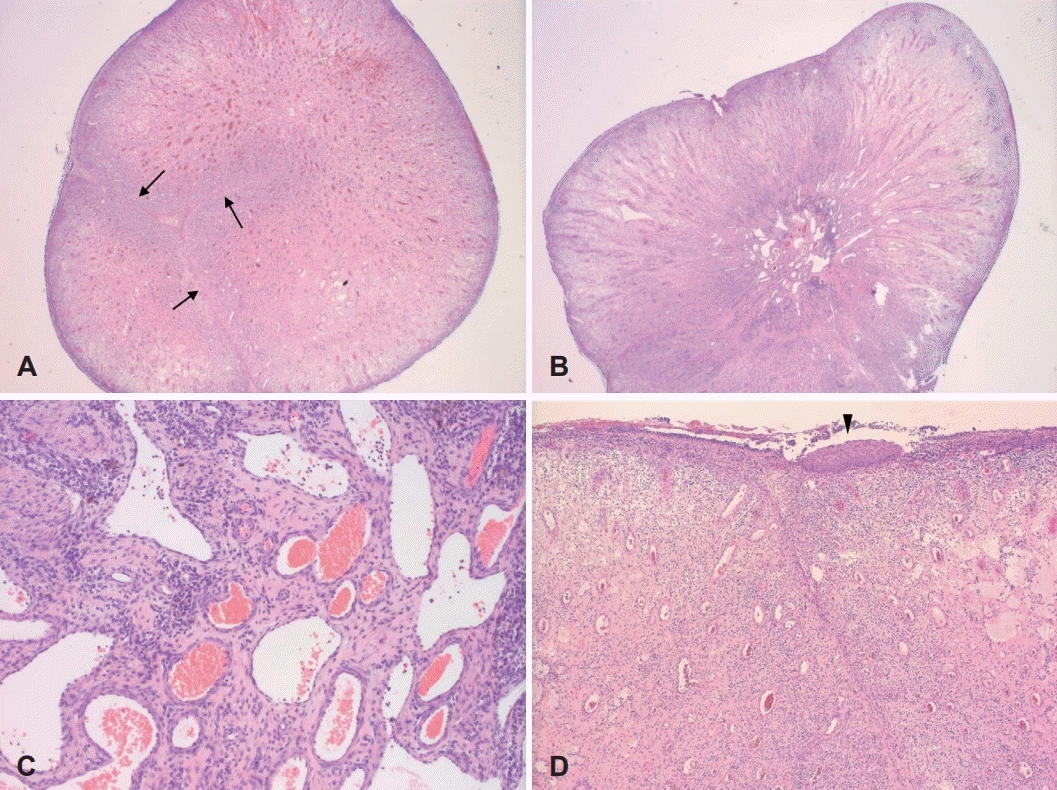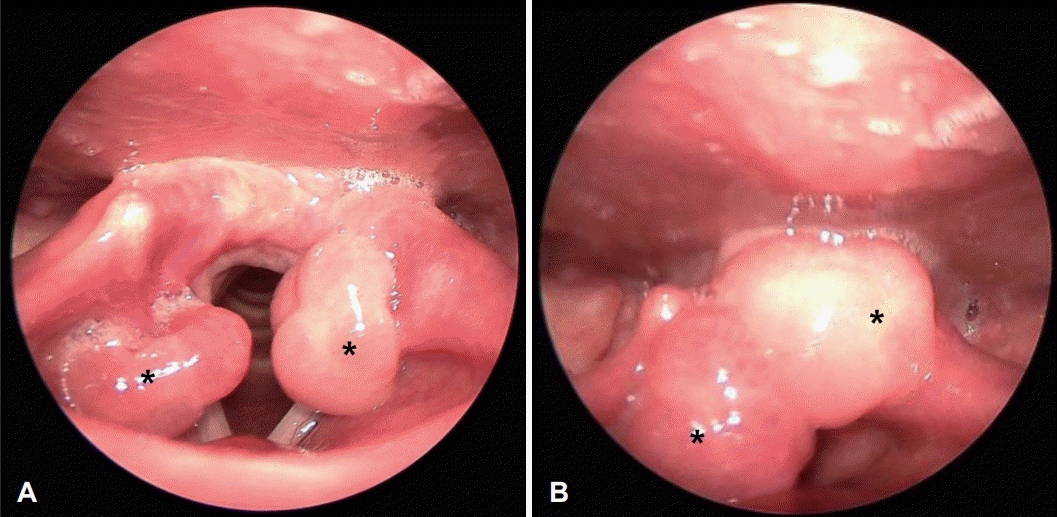서 론
증 례
 | Fig. 2.The rigid laryngoscopic image of both arytenoid that taken after surgery. A: At eighth postoperative day. It appears to be a normal wound healing process. B: Three-month after surgery, there was no evidence of recurrence and the arytenoid mucosa recovered well. |
 | Fig. 3.Histopathologic finding with hematoxylin and eosin staining showed the typical pattern of pyogenic granuloma. The left arytenoid nodular mass, 0.8 cm-sized, shows congested small vessels aggregation with thin connective tissue septae (arrows), suggesting lobular capillary hemangioma (LCH) type of pyogenic granuloma (A, ×12.5) and the right arytenoid mass, 1.0 cm-sized, reveals central branching vessels and many elongated vessels; suggesting non-LCH type of pyogenic granuloma (B, ×12.5). In high power view, small vessels with or without vascular wall aggregation with stromal hemosiderin-laden macrophages and stromal fibroblastic proliferation are observed (C, ×100). Diffuse surface ulceration with focal remnant squamous epithelium (arrowhead) and underlying edematous stroma (D, ×40). |




 PDF
PDF Citation
Citation Print
Print




 XML Download
XML Download